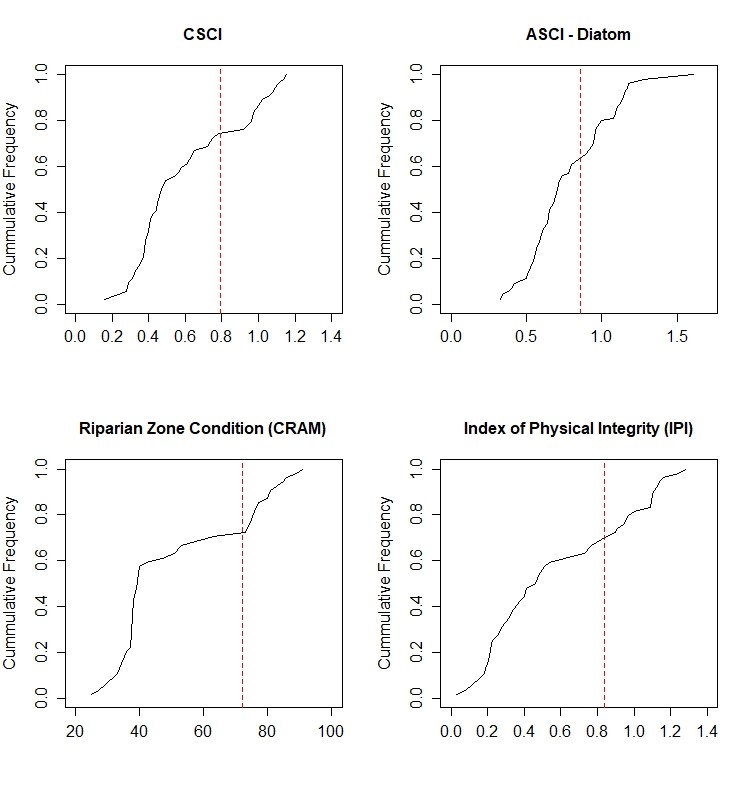This portion of the program is designed to assess the dry weather ambient condition of streams in the watershed based on a
probabilistic sampling design. Over 150 sites have been visited since 2008 and measured for biotic and riparian zone condition,
water chemistry and physical habitat condition.
Some key findings:
-
Biotic conditions, as measured by the California Stream Condition Index (CSCI), were best in the upper
watershed and worst in the lower watershed, where lined and
altered stream channels predominate.CSCI scores at 70% of sites in the
watershed were below levels associated with reference condition.
Communities in the upper watershed were characterized by organisms that were pollution
sensitive and exhibited a wide range of feeding strategies. In
contrast, the lower watershed was dominated by more tolerant
organisms employing only a few feeding strategies.
-
Riparian zone physical habitat conditions ranged from nearly
pristine in the upper watershed to moderately to highly degraded
in the channelized lower tributaries and mainstem, respectively,
as measured by the California Rapid Assessment Method (CRAM).
Similarly, physical habitat conditions as measured by the Index of Physical Habitat Integrity (IPI)
followed this same pattern.
-
Nutrients and metals were consistently lower at upper watershed
sites compared to the lower tributaries and mainstem.
Nutrients were greatest on the mainstem,
while most metals were greatest in the lower tributaries. An
exception to this was zinc which was much greater on the mainstem
compared to the other sub-regions.
-
There were few exceedances of dry weather Basin Plan standards
for any water quality parameters measured during the period.
Nitrate and ammonia were well below the thresholds and there were few to
no exceedances of the hardness adjusted CTR for any dissolved
metal.
-
There was a strong relationship between the condition of the
biological community and physical habitat conditions. Sites in the
lower watershed were characterized by concrete lined channels,
increased nutrients (nitrate and ammonia) and zinc. Conversely,
sites in the upper watershed had good epifaunal cover, and increased
amounts of cobble and canopy cover. There was also clear
separation by biotic condition, with the best CSCI scores in
the upper watershed and the poorest in the lower tributaries and
mainstem channel.Algal communities as measured by the ASCI were also in better condition in the upper watershed.
